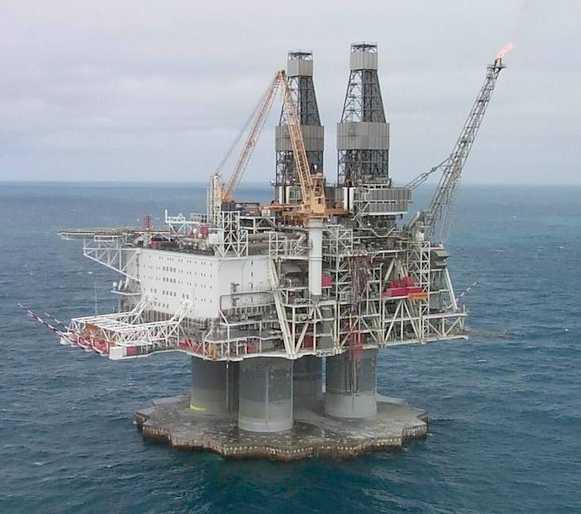Oil rig blast that shook the world
The worst of the explosions gutted the Deepwater Horizon stem to stern. Crew members were cut down by shrapnel, hurled across rooms and buried under smoking wreckage. Some were swallowed by fireballs that raced through the oil rig's shattered interior.
Dazed and battered survivors, half-naked and dripping in highly combustible gas, crawled inch by inch in pitch darkness, willing themselves to the lifeboat deck.It was no better there.
That same explosion had ignited a firestorm that enveloped the rig's derrick. Searing heat baked the lifeboat deck. Crew members, certain they were about to be cooked alive, scrambled into enclosed lifeboats for shelter, only to find them like smoke-filled ovens.
Men admired for their toughness wept. Several said their prayers and jumped into the oily seas 60 feet below. An overwhelmed young crew member, Andrea Fleytas finally screamed what so many were thinking: "We're going to die!"
It has been eight months since the Macondo well erupted below the Deepwater Horizon, creating one of the worst environmental catastrophes in US history. With government inquiries under way and billions of dollars in environmental fines at stake, most of the attention has focused on what caused the blowout. Investigators have dissected BP's well design and Halliburton's cementing work, uncovering problem after problem.
Dazed and battered survivors, half-naked and dripping in highly combustible gas, crawled inch by inch in pitch darkness, willing themselves to the lifeboat deck.It was no better there.
That same explosion had ignited a firestorm that enveloped the rig's derrick. Searing heat baked the lifeboat deck. Crew members, certain they were about to be cooked alive, scrambled into enclosed lifeboats for shelter, only to find them like smoke-filled ovens.
Men admired for their toughness wept. Several said their prayers and jumped into the oily seas 60 feet below. An overwhelmed young crew member, Andrea Fleytas finally screamed what so many were thinking: "We're going to die!"
It has been eight months since the Macondo well erupted below the Deepwater Horizon, creating one of the worst environmental catastrophes in US history. With government inquiries under way and billions of dollars in environmental fines at stake, most of the attention has focused on what caused the blowout. Investigators have dissected BP's well design and Halliburton's cementing work, uncovering problem after problem.
But this was a disaster with two distinct parts — first a blowout, then the destruction of the Horizon. The second part, which killed 11 people and injured dozens, has escaped intense scrutiny, as if it were an inevitable casualty of the blowout.
It was not.
Nearly 400 feet long, the Horizon had formidable and redundant defences against even the worst blowout. It was equipped to divert surging oil and gas safely away from the rig. It had devices to quickly seal off a well blowout or to break free from it. It had systems to prevent gas from exploding and sophisticated alarms that would quickly warn the crew at the slightest trace of gas. The crew itself routinely practiced responding to alarms, fires and blowouts, and it was blessed with experienced leaders who clearly cared about safety.
On paper, experts and investigators agree, the Deepwater Horizon should have weathered this blowout.
Based on interviews with 21 Horizon crew members and on sworn testimony and written statements from nearly all of the other 94 people who escaped the rig, what emerges is a stark and singular fact: crew members died and suffered terrible injuries because every one of the Horizon's defences failed on April 20. Some were deployed but did not work. Some were activated too late, after they had almost certainly been damaged by fire or explosions. Some were never deployed at all.
At critical moments that night, members of the crew hesitated and did not take the decisive steps needed. Communications fell apart, warning signs were missed and crew members in critical areas failed to coordinate a response. The result was paralysis. For nine long minutes, as the drilling crew battled the blowout and gas alarms eventually sounded on the bridge, no warning was given to the rest of the crew. For many, the first hint of crisis came in the form of a blast wave.
The paralysis had two main sources, the examination by The Times shows. The first was a failure to train for the worst. The Horizon was like a Gulf Coast town that regularly rehearsed for Category 1 hurricanes but never contemplated the hundred-year storm. The crew members, though expert in responding to the usual range of well problems, were unprepared for a major blowout followed by explosions, fires and a total loss of power.
They were also frozen by the sheer complexity of the Horizon's defences, and by the policies that explained when they were to be deployed. One emergency system alone was controlled by 30 buttons.
In the end, though, many lives were saved by simple acts of bravery, the interviews and records show. All over the rig, in the most hellish of circumstances, men and women helped one another find a way to live





No comments:
Post a Comment